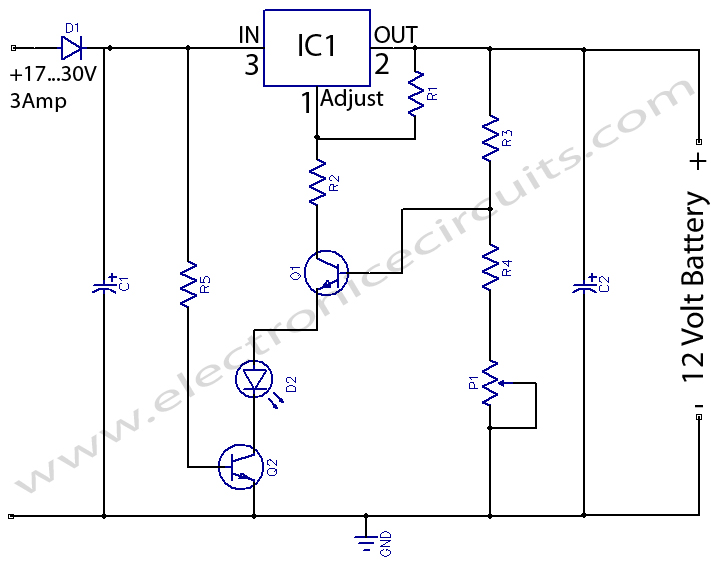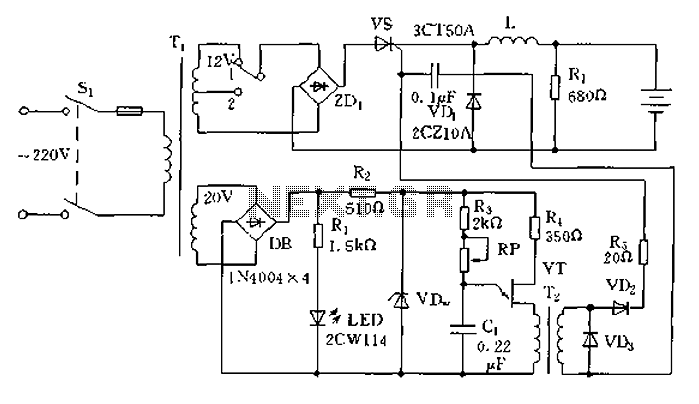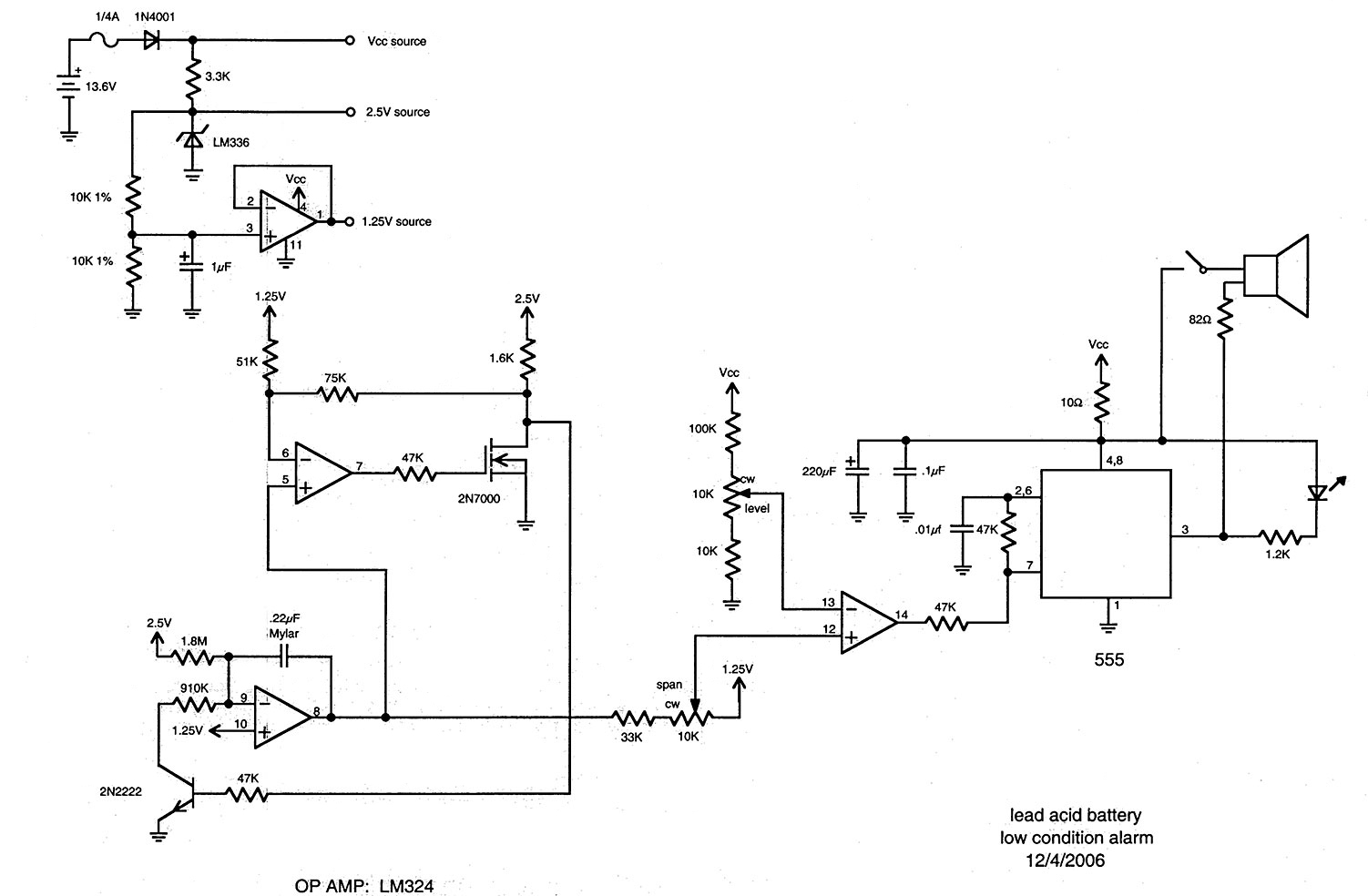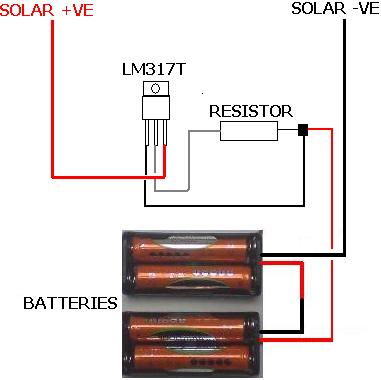
12 Volts Lead Acid Battery Charger

12 Volts Lead Acid Battery Charger Circuit. Apart from serving as a standard battery charger, this circuit is ideal for providing a constant charge to a 12-Volt lead-acid battery.
This 12-Volt lead-acid battery charger circuit is designed to efficiently charge and maintain the battery's voltage level, ensuring optimal performance and longevity. The charger typically consists of several key components: a transformer, a rectifier, a voltage regulator, and various passive components such as resistors and capacitors.
The transformer steps down the mains voltage to a lower AC voltage suitable for charging the battery. The output from the transformer is then fed into a bridge rectifier, which converts the AC voltage into DC voltage. This rectified output is not yet suitable for charging the battery directly, as it may vary and could exceed the battery's maximum voltage rating.
To achieve a constant charging voltage, a voltage regulator is employed. This component stabilizes the output voltage to a safe level (typically around 13.8 to 14.4 volts for a 12-volt lead-acid battery) to ensure that the battery is charged without overcharging, which can lead to reduced battery life and potential hazards.
Additional components may include diodes for reverse polarity protection, fuses for circuit protection, and capacitors to smooth out the voltage fluctuations. An LED indicator may also be added to visually indicate the charging status.
Overall, this circuit not only provides a reliable means to charge a 12-volt lead-acid battery but also incorporates safety features and voltage regulation to enhance the charging process and protect the battery from damage.12 Volts Lead Acid Battery Charger Circuit Except for use as a normal Batter Charger, this circuit is perfect to ‘constant-charge a 12-Volt Lea.. 🔗 External reference
This 12-Volt lead-acid battery charger circuit is designed to efficiently charge and maintain the battery's voltage level, ensuring optimal performance and longevity. The charger typically consists of several key components: a transformer, a rectifier, a voltage regulator, and various passive components such as resistors and capacitors.
The transformer steps down the mains voltage to a lower AC voltage suitable for charging the battery. The output from the transformer is then fed into a bridge rectifier, which converts the AC voltage into DC voltage. This rectified output is not yet suitable for charging the battery directly, as it may vary and could exceed the battery's maximum voltage rating.
To achieve a constant charging voltage, a voltage regulator is employed. This component stabilizes the output voltage to a safe level (typically around 13.8 to 14.4 volts for a 12-volt lead-acid battery) to ensure that the battery is charged without overcharging, which can lead to reduced battery life and potential hazards.
Additional components may include diodes for reverse polarity protection, fuses for circuit protection, and capacitors to smooth out the voltage fluctuations. An LED indicator may also be added to visually indicate the charging status.
Overall, this circuit not only provides a reliable means to charge a 12-volt lead-acid battery but also incorporates safety features and voltage regulation to enhance the charging process and protect the battery from damage.12 Volts Lead Acid Battery Charger Circuit Except for use as a normal Batter Charger, this circuit is perfect to ‘constant-charge a 12-Volt Lea.. 🔗 External reference





